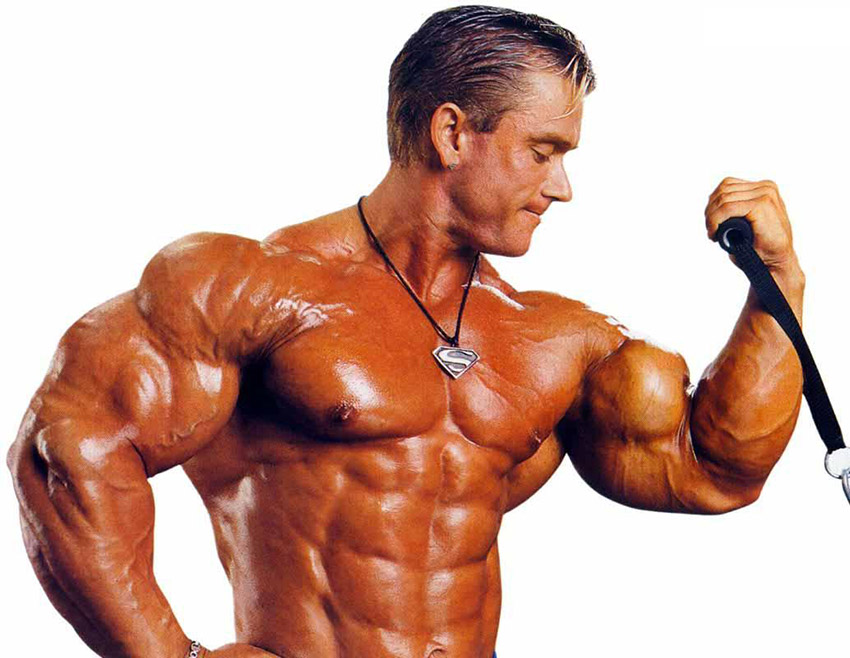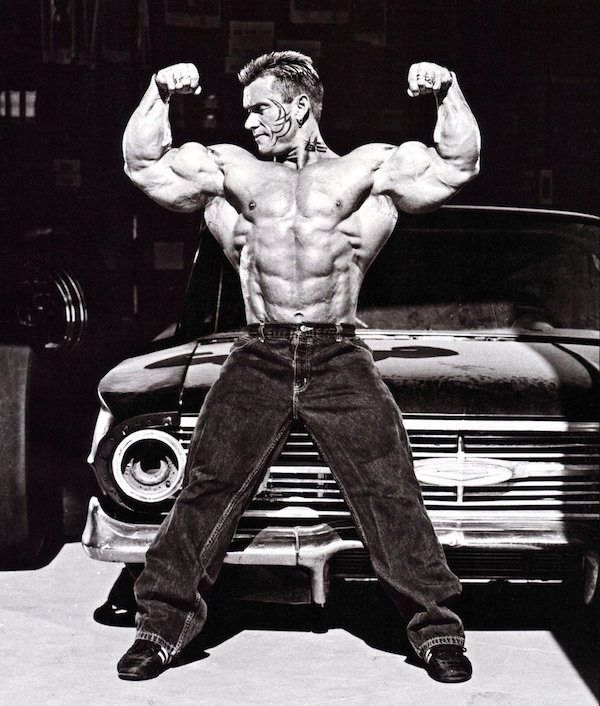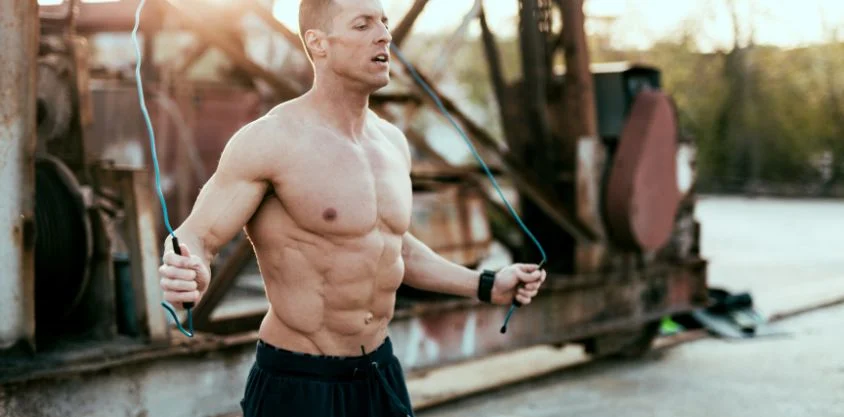Lee Priest is a name that resonates deeply within the bodybuilding community. Known for his impressive physique, outspoken nature, and controversial stance against the International Federation of Bodybuilding & Fitness (IFBB), Priest’s journey through the world of professional bodybuilding is as inspiring as it is tumultuous. His career offers valuable insights into not just training and nutrition, but also the philosophy of standing up for one’s beliefs in the face of adversity.

Early Life and Entry into Bodybuilding
Born on July 6, 1972, in Newcastle, Australia, Lee Priest showed an early interest in bodybuilding. His mother, who was also a competitive bodybuilder, served as one of his first inspirations. By the age of 13, Lee had already won his first bodybuilding competition, and by 17, he had earned his pro card, an extraordinary achievement that showcased his natural talent and relentless dedication.
Despite his young age, Priest’s physique was far beyond his years. His ability to pack on muscle, combined with his aesthetic proportions and incredible conditioning, quickly made him a standout in the bodybuilding world. However, his career would soon become defined not just by his physical prowess but by his willingness to speak his mind.

Rising Through the Ranks and Clashing with the IFBB
Lee Priest’s professional career was marked by numerous successes. He competed in various IFBB competitions, including the prestigious Mr. Olympia contest, where he consistently placed well despite his shorter stature (standing at 5’4″). His impressive arm development and overall symmetry made him a fan favorite.
However, Priest’s career was not without controversy. Known for his blunt honesty, he frequently criticized the IFBB’s judging criteria and the politics within the sport. He believed that the organization often favored certain athletes over others, regardless of their performance on stage. His refusal to conform to the unspoken rules of the industry led to tensions with the IFBB, eventually resulting in his suspension from the federation.

Here’s a detailed breakdown of Lee Priest’s physical stats and key details:
Physical Data:
- Full Name: Lee Andrew McCutcheon (known professionally as Lee Priest)
- Date of Birth: July 6, 1972
- Age: 51 (as of 2024)
- Height: 5 ft 4 in (162.5 cm)
- Off-Season Weight: 260–270 lbs (118–122 kg)
- Competition Weight: 200–210 lbs (90–95 kg)
- Arm Size: 22 inches (56 cm)
- Chest: 50 inches (127 cm)
- Waist: 30 inches (76 cm)
- Thighs: 30 inches (76 cm)
- Calves: 20 inches (51 cm)
Best Condition:
Lee Priest is known for maintaining impressive muscle mass with a high degree of conditioning, even at a shorter height compared to his competitors. His best condition is often cited during the 2002 San Francisco Pro Invitational and the 2006 Ironman Pro Invitational, where his combination of size, symmetry, and definition was at its peak.
- 2002 San Francisco Pro Invitational: Marked his first major pro win, showcasing incredible vascularity and symmetry.
- 2006 Ironman Pro Invitational: His victory here demonstrated his refined muscular development and razor-sharp conditioning, arguably his career-best shape.

Notable Features:
- Arms: His 22-inch arms are some of the most admired in bodybuilding history, known for their fullness and vascularity.
- Proportions: Despite being shorter, Lee’s proportions, especially his arm-to-waist ratio, gave him an edge in aesthetics over many larger competitors.
- Conditioning: He was famous for achieving extreme muscle definition while maintaining fullness, often out-conditioning much larger bodybuilders.
Lee Priest’s physique is often held as a benchmark for achieving a balance between size, symmetry, and aesthetics, proving that you don’t need to be the tallest or heaviest to dominate on stage.
Lee Priest, an Australian professional bodybuilder, is known for his impressive physique, particularly his arm development, and for competing at a relatively shorter height compared to other top-tier bodybuilders. Here’s a list of his major competitions and placements over his career:
Early Career (Teenage and Amateur)
- 1986 IFBB Australia – 4th (at 13 years old)
- 1989 IFBB Australia – 1st (Teenage division, 17 years old)
- 1990 IFBB Australia – 1st (Teenage and Overall Champion)
- 1990 IFBB World Amateur Championships – 4th (disqualified for being under the age limit)
Professional Career (IFBB Pro Competitions)
Lee Priest turned professional at 20, becoming one of the youngest to do so.
- 1993 IFBB Niagara Falls Pro Invitational – 9th
- 1994 IFBB Ironman Pro Invitational – 4th
- 1994 IFBB Arnold Classic – 7th
- 1994 IFBB Night of Champions – 12th
- 1994 IFBB Grand Prix Germany – 6th
- 1994 IFBB Grand Prix England – 4th
- 1995 IFBB Ironman Pro Invitational – 3rd
- 1995 IFBB Arnold Classic – 9th
- 1995 IFBB Florida Pro Invitational – 4th
- 1995 IFBB South Beach Pro Invitational – 4th
- 1996 IFBB Ironman Pro Invitational – 4th
- 1996 IFBB San Jose Pro Invitational – 6th
- 1996 IFBB Arnold Classic – 7th
- 1997 IFBB Ironman Pro Invitational – 2nd
- 1997 IFBB Arnold Classic – 7th
- 1997 IFBB San Jose Pro Invitational – 2nd
- 1997 IFBB Mr. Olympia – 6th (his best Olympia placement)
- 1998 IFBB San Francisco Pro Invitational – 4th
- 1998 IFBB Toronto Pro Invitational – 3rd
- 1998 IFBB Night of Champions – 7th
- 1999 IFBB Ironman Pro Invitational – 6th
- 1999 IFBB Arnold Classic – 8th
- 1999 IFBB Mr. Olympia – 8th
- 2000 IFBB Night of Champions – 5th
- 2000 IFBB Mr. Olympia – 6th
- 2001 IFBB Ironman Pro Invitational – 7th
- 2002 IFBB Ironman Pro Invitational – 2nd
- 2002 IFBB Arnold Classic – 4th
- 2002 IFBB San Francisco Pro Invitational – 1st (his first major pro win)
- 2002 IFBB Mr. Olympia – 6th
- 2003 IFBB Ironman Pro Invitational – 2nd
- 2003 IFBB San Francisco Pro Invitational – 2nd
- 2004 IFBB Ironman Pro Invitational – 2nd
- 2004 IFBB San Francisco Pro Invitational – 2nd
- 2005 IFBB Grand Prix Australia – 1st
- 2005 IFBB Arnold Classic – 4th
- 2005 IFBB Ironman Pro Invitational – 2nd
- 2005 IFBB San Francisco Pro Invitational – 2nd
- 2006 IFBB Ironman Pro Invitational – 1st
- 2006 IFBB Arnold Classic – 6th
Post-IFBB Career (NABBA and Other Competitions)
After leaving the IFBB, Lee competed in other bodybuilding federations.
- 2013 NABBA Mr. Universe (Professional Division) – 1st

The “Cobra” pose is one of Lee Priest’s most iconic and recognizable poses in bodybuilding. This pose emphasizes his incredible arm development, shoulder width, and lat spread, making his upper body resemble the flared hood of a cobra—hence the nickname.
Key Elements of the Cobra Pose:
- Arms Flexed Outward:
Lee would flare his biceps outward with a slight bend in the elbows, making his 22-inch arms look even more massive and vascular. - Lats Fully Spread:
His latissimus dorsi muscles would be flared to their maximum, creating that wide, “wing-like” appearance that contributes to the “cobra” shape. - Tight Waist:
Despite his size, Lee maintained a small waist (around 30 inches), which made the upper body look even broader and more dramatic in contrast. - Chest and Shoulders Popped:
His pecs and deltoids were fully engaged, adding to the visual thickness and depth of his upper torso. - Facial Expression:
Lee was known for adding charisma to his poses. In the Cobra pose, he’d often give a confident or playful look, showing his personality on stage.
Why It’s Iconic:
The Cobra pose became synonymous with Lee Priest because it showcased his greatest strengths: insane arm size, detailed conditioning, and a wide, thick back. It also set him apart from other competitors who couldn’t achieve the same dramatic flair due to different physiques or proportions.
This pose is frequently highlighted in his photoshoots and guest posing routines, and it’s a favorite among fans when they think of his legendary physique.

Training Philosophy and Workout Regimen
Lee Priest’s training philosophy is rooted in simplicity and consistency. He is a firm believer in the basics: heavy lifting, proper form, and progressive overload. Unlike many of his contemporaries who followed complex training routines, Priest kept his workouts straightforward and effective.
His typical training split included working each muscle group with high intensity and volume. He focused on compound movements like bench presses, squats, and deadlifts, supplemented by isolation exercises to enhance muscle detail and symmetry. Priest also emphasized the importance of listening to one’s body, advocating for rest and recovery as critical components of any successful training program.
One of his most famous quotes encapsulates his training philosophy: “Train hard, eat right, and the rest will take care of itself.” This no-nonsense approach resonated with many aspiring bodybuilders who admired his dedication and work ethic.
Nutritional Approach
When it came to nutrition, Lee Priest was equally straightforward. He believed in eating whole, nutrient-dense foods and maintaining a balanced diet. Unlike many bodybuilders who adhered to rigid, restrictive diets, Priest was known for his more relaxed approach during the off-season, often indulging in his favorite treats like cereal and fast food. However, when it was time to prepare for competitions, he tightened his diet, focusing on lean proteins, complex carbohydrates, and healthy fats to achieve peak conditioning.
His ability to switch between off-season and competition prep with ease demonstrated his deep understanding of his body’s needs and responses to different nutritional strategies.

Philosophy and Legacy
Beyond his physical achievements, Lee Priest’s legacy is defined by his philosophy of authenticity and integrity. He was never afraid to speak out against what he perceived as injustices within the bodybuilding industry, even if it meant jeopardizing his career. This rebellious spirit earned him both admirers and critics, but it solidified his place as one of the sport’s most influential figures.
Priest’s story is a testament to the importance of staying true to oneself, regardless of external pressures. His career serves as a reminder that success is not just about winning titles but also about making a meaningful impact and inspiring others to follow their own path.

Your Instagram: https://www.instagram.com/leepriestofficial72/
Conclusion
Lee Priest’s journey through the world of bodybuilding is a fascinating tale of talent, perseverance, and defiance. His impressive physique and training expertise made him a standout athlete, but it was his unwavering commitment to his principles that truly set him apart. As both a competitor and a critic, Priest has left an indelible mark on the sport, inspiring countless individuals to pursue their goals with passion and integrity.
Whether admired for his incredible arm development, respected for his training insights, or remembered for his fearless critiques of the IFBB, Lee Priest remains a towering figure in the world of bodybuilding—a true embodiment of strength, both physical and moral.


